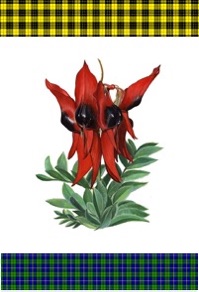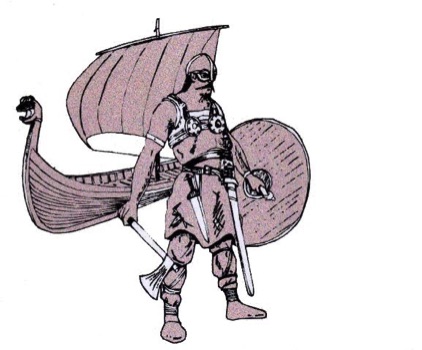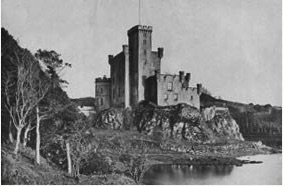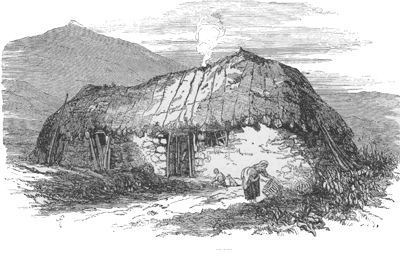The Clan
MacLeod


Clan MacLeod Society of Australia (South Australia) Inc.
_____________________________________________________________


Dunvegan Castle - view from the north
About
The word clann in Gaelic means children of the family. Each clan was a large group of related people, theoretically an extended family, supposedly descended from one progenitor and all owing allegiance to the patriarchal clan chief. It also included a large group of loosely related septs – related families, all of whom looked to the clan chief as their head and their protector.
The prefix ‘Mac’ means ‘son of’.
On the Outer Hebrides, the Western Isles of Scotland, the migrating Picts and Gaels and others, formed the basis of a tribal civilization, which had resisted the Roman occupation of Britain. By the 9th century they were submerged under the domination of the invading Norsemen, who raided and settled there. In time, there came about a mixed race known as the Gall-Gaidheal.
By the politics of the sword, various rulers from Norway, or Ireland (Gaels and Danes) held temporary power over the lands or parts. By the 11th century the Kings of Man, as vassals of Norway, held power and succession over the Western Isles.
The Kingdom of Scotland was consolidating. In the 12th century, the Western Isles Kingdom of Man was in local dispute between the Royal Norse ruler, Olave the Black and a rival, Somerled, the pro-Gael (ancestor of Clan Donald, the bitter clan rivals of MacLeod).
In the 13th century (c. 1266), after the 3rd of Olave’s Son-Kings had died, the Hebrides were ceded to Scotland and given to authority under Clan MacDonald as ‘Lord of the Isles’ for 200 years.
Leod, another son of Olave the Black, had cleverly retained vast lands in the Western Isles during the shift of allegiance and authority, but it would remain a troublesome issue to the various island clans. Dunvegan Castle, seen to the left, as it supposedly appeared in the time of Leod, (13th century).
Two of Leod's early descendants, Tormod and Torquil, became the heads of the two great clans MacLeod. From Siol Tormod are descended the MacLeods of Dunvegan (Skye), Harris and Glenelg. Their heirs and Chiefs have resided there for 800 years to this 21st century. From Siol Torquil are the MacLeods of Lewis, Assynt, Coigeach, Gairloch and Raasay.
A history of these and other Highland Clans reveals their diverse chapters of fierce, bitter and bloody rivalries with their enemies. There are examples of noble and ignoble leadership; greatness and self destruction. Doyens with political acumen and recklessness.
After the forfeiture of the Lord of the Isles in 1480, central authority was incapable of maintaining order. Bloody chaos and feud ensued. Favoured clans or parties were given ‘Letters of fire and sword’ to exact retribution for the crown. Far worse, was a policy of dualism and division, where rival clans were given the same right, or title, to lands. In time, the mayhem destabilized the power of the Highland clans.
The Chiefs of Clan MacLeod of Lewis had their home in the fortress at Stornoway on the Isle of Lewis. Their antagonism to the Crown led to the eventual forfeiture of their lands and title in 1598. Their line of succession in just two generations, either failed, died young, died in service, disappeared in mysterious circumstances, or was executed. The MacLeods of Raasay, as a senior cadet family of Lewis, carried the right to title for four more centuries.
The MacLeods of Harris at Dunvegan Castle, were pledged to ‘good rule and quietness in the Islands’ but had great strife with the MacDonalds and Frasers.
MacLeod did not participate in the Jacobite uprisings of Prince Charlie because of prior heavy losses, however, Raasay sided with the Jacobites and paid dearly for that allegiance. In the harrowing decades that followed in the 18th and 19th century, financial demands on the estates grew alarmingly, as did the population. Economic depression swept the Highlands into such poverty, that Highland and Island estates, much of which was used as common land by the communities, was being cleared of people and sold to southern landlords and entrepreneurial sheep farmers.
The era of the Highland Clearances had begun. People made way for more profitable sheep farms. Some just went and others were sent, to other estates, cities, and overseas to the burgeoning colonies in America, Canada, Australia and New Zealand.
MacLeods of Raasay sold their Island estates and came to South Australia.
The Chiefs of MacLeod of Dunvegan, mourning the loss of a Highland way of life that had kinship at its core, embraced a world of MacLeods dispersed across the seas, which still held the Hebrides in its heart. They established the Clan MacLeod Societies, perhaps for ‘auld lang syne’ and perhaps for new generations, to explore their kinship and appreciate the cultural elements which make us ‘Hold Fast’ and ‘Shine’ after 800 years.
The Clan
MacLeod

© 2008 The Clan MacLeod
